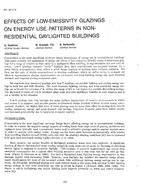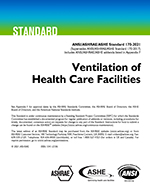The Student’s Union of Mannheim (StudierendenwerkMannheim [SWMA]) is a public body responsible for the operationof cantinas and student dormitories. With an increasingnumber of students and a building stock age averaging 35years, SWMA faces the challenges of managing and permanentlyrefurbishing the aging building stock. The eight dormitoriesin the Ludwig Frank quartier originate in the 1930s and1960s and were transformed from their former function as militarystaff living quarters into dormitories in the mid-1990s.Now, after 25 years and with a high fluctuation of inhabitants,the buildings again need refurbishment to provide sufficientcomfort and to comply with updated fire protection regulations.In the context of IEA Annex 61 (IEA 2016) research work,the SWMA leadership elaborated, in conjunction with theauthors, a refurbishment master plan that includes a deepenergy retrofit solution.IEA Annex 61 defines a deep energy retrofit, or DER, as”major building renovation project in which site energy useintensity (including plug loads) has been reduced by at least50% from the pre-renovation baseline with a correspondingimprovement in indoor environmental quality and comfort”(IEA 2016). In the case of the Ludwig Frank quartier, theenergy modeling and cost-benefit optimization helped toconfigure a bundle of measures with a predicted reduction ofat least 70% energy savings. The bundle of measures is acombination of high-performance envelope requirements,HVAC, and lighting systems, including photovoltaic (PV)power generation. As the building owner, SWMA has a limitedbudget; the calculated investment of approximately 3 millionEuro was considered to be provided in a public-private partnership(PPP) project. Because of the strict debt limit policiesfor public entities, several options for PPPs were compared.Energy performance contracting (EPC) sees the energyservice company (ESCO) in the role to invest, finance, implement,and operate the measure bundle. EPC provides a performance-related remuneration scheme for the building owner(“pay as you save”), which can be considered debt- neutral.However EPC has so far only been considered for HVACmeasures. Integrating the building envelope means tripling theinvestment budget of a “normal” HVAC EPC; also, the ESCOshave no experience in how to implement a building envelopeand guarantee its performance.
The goal of this paper is to demonstrate how these ambitiousenergy targets were implemented in an advanced DEREPC business model and by which means the multiple riskswere mitigated in the technical concept, the procurement structure,the award criteria, and the contract structure. This papershows that, even with a small baseline, a DER EPC can becarried out cost-effectively by combining DER and non-DERbuildings and measure bundles and by adding a cost-effectivesupply solution for the refurbished buildings. After the completionof the public procurement process, the Ludwig Frank projectis now in the first part of the implementation phase, whichmeans a detailed planning process and then the constructiveimplementation. During the detailed planning it will beassessed if the option of a second DER building would still becost-effective. The process in the preparation phase of the projectand the results of the tendering were very encouraging forESCOs and building owners. As a pilot effort, there have alsobeen many process-based and technical experiences that canbe used to bolster future DER work in the public sector(German Energy Agency, n.d.).
Citation: 2017 Winter Conference, Las Vegas, NV, Transactions, Vol 123, Pt 1
Product Details
- Published:
- 2017
- Number of Pages:
- 19
- Units of Measure:
- Dual
- File Size:
- 1 file , 4.8 MB
- Product Code(s):
- D-LV-17-017


